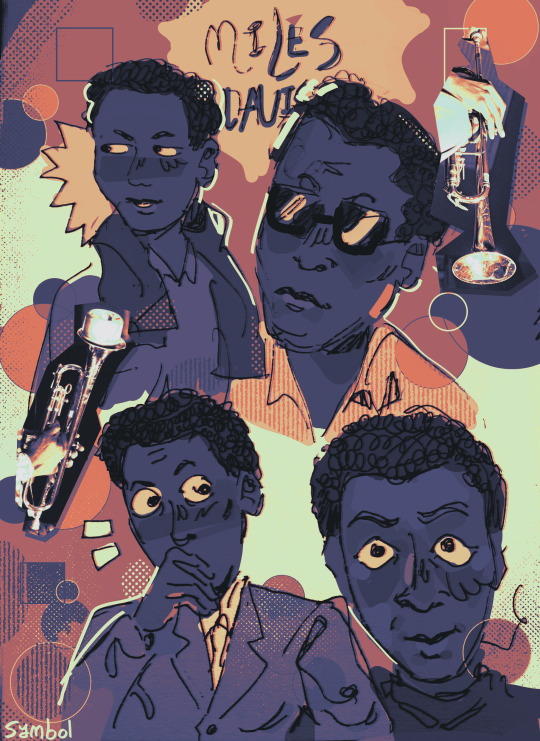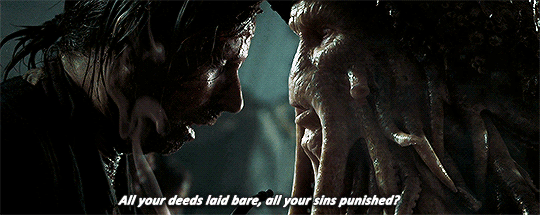#Bill Davis
Text
Personality Typing: What Happens Later

W. Davis and W. Davis meet again in an airport 25 years after their love life took a slow nosedive. Now, curious about each other's decisions since the breakup, they slowly surrender to uncomfortable truths, healing each other and drawing closer together. Their love, which never disintegrated, becomes more open and honest after a night of new revelations and clearer understanding.
I've already written an overview of their miscommunication (post here); but found it really interesting to dig into their Types' frictions and fluidities.
**Note: Will ghost edit later~**
WILLIAM "BILL" DAVIS, the ESTJ

ESTJs are structure-based, "take charge", direct, initiating, and control Types: meaning, they have no problem opening or closing conversations with ease, saying what they mean upfront, planning for an ultimate end goal and keeping those plans until completion, and deal more solidly with concrete tangibles than metaphysical hypotheticals. As they age, they dabble more in philosophical abstracts (with their "Shadow" functions); and can aspire to be very crafty with their careful strategies and executions. ESTJs are the quintessential "Structure" Types, seeking or creating order out of a continually chaotic world; and, while plodding along their paths with that outcome in mind, they become guardians to those around them that need structure or protection in their own lives, as well. Because of this, they are the Types most successful at following the beaten path, upkeeping it for the rest of humanity in their wake.
The Hero Function: The Heroic Function is the Type's first and easiest function to use in its stack of eight. Thinking Extroverted, Te for short, Hero focuses on rational, statistical data: "I can do x/y/z if it's proven to be safe or advantageous or beneficial"; and are more likely to put more trust in established institutions or beliefs than individual ideas or new theories. Because of this, they will also more likely categorize and dismiss alternate lifestyles or opinions with a label or privately held opinion (i.e. "'Endure this dangling'? ...Now I remember Ginny.") This ability is actually an essential tool for society at large: an ESTJ has the ability to sort and rank large amounts of people and information into easily designated groups, helping others as efficiently as possible while also helping themselves to climb the ladders of achievement. (However, unlike most ENTJs-- post here-- ESTJ's find it more comfortable to take and delegate orders rather than directly give them, fitting them perfectly into second-in-command or managerial positions.)
The Parent Function: The second "parental" Function of the eight is the most guiding or reinforcing for the Hero, steering it away from too easy, pleasure-seeking solutions. Sensing Introverted, Si for short, Parent dictates a person's dedication to duty, long-term memory, responsibility, and loyalty; in essence, the "should do"s of life. For an ESTJ, it makes them responsibly loyal, not willing to hand out trust or commitment to anyone until they've earned it (or in Bill and Willa's case, earned it back.) It'll give others a helping hand, keep an eye out for them, even go out of their way for that person; but trust with all their heart and soul is worked at, not just handed over.
The Child Function: The third Function is the Type's propensity for their specific brand of overflowing optimism or ability to make "miracles" for themselves and others. Extroverted Intuition, Ne for short, Inferior has the "miracle" of making anything possible, pulling impossible solutions or improbable second chances out of thin air for their loved ones (and themselves.) It is also the place where a Type can be "abused" and deeply wounded: "child abuse" to an ESTJ is when others do not communicate their intent, wants, or needs: it leaves Ne Child to flounder and spiral and guess and second guess, breaking down their Si Parent's security and trust and scaring an ESTJ into a wrong choice with their Ni Trickster (which is what lead to the breakdown of Bill and Willa's relationship.) An ESTJ must feel wanted; and if they're acts of service are taken for granted and unappreciated, they will feel used and unwanted.
The Inferior Function: The fourth Function is an aspirational function, acting as the vanity and insecurity of a Type and leading either to their positive Unconscious or negative Superego (post here.) Introverted Feeling, Fi for short, fears that it is not morally strong enough-- that they lack good principles or are lacking as a person (Bill's fear of having failed his daughter, and later Willa and their daughter); but, if mature, can out-moral stronger Fi Users in short bursts, becoming brave enough to seek individual meaning outside the confines of fear or expectation.
The Nemesis Function: The fifth Function serves as a speedbump for the Hero, its anti-hero that can be transformed from a guilt-trip to a Type's necessary counterpoint perspective. Introverted Thinking, Ti for short, Nemesis always fears that it's and other people's thinking is faulty or incorrect; and, if used to an ESTJ's advantage, will drive them to cross-reference their beliefs or (possibly outdated) information. (This was the core reason behind Bill's suspicions before Willa even proposed an open relationship: Willa struggles with articulation, and her communication was never clear enough for her then-boyfriend's worries, which created suspicion.)
The Critic Function: The sixth Function is either the crotchety old grandparent or the wise, matured elder of the eight functions. Extroverted Sensing, Se for short, Critic is an elitist hypocrite, equating external appearance with intelligence and criticizing others' appearance or mannerisms or ways of life that don't reflect "decently" back on them (ex. Bill's "Oil of newt?" and "You don't have a phone? Of course you don't have a phone!" to Willa.) At the same time, their own presentation or personal lives could be lacking without them realizing (Bill yelling at Willa for her being a "mess" while his own life was also in shambles.)
The Trickster Function: The seventh Function is the blind-and-deaf of the eight functions. Introverted Intuition, Ni for short, Trickster deceived an ESTJ into thinking they know what want-- they DO NOT. It is imperative that they do not make big decisions, especially big ones, alone or without input or proper outsourcing; otherwise, they will be tricked into a faulty decision by malevolent actors... or by themselves (Bill's decision to break up with Willa instead of communicating contributed to the relationship's end.) If matured, this function helps sort through what an ESTJ really wants versus what it thinks it wants.
The Demon Function: The eighth and most powerful Function of the stack, the Demon is reserved for punishment or retribution if a person's needs are routinely being ignored or disregarded. Extroverted Thinking, Fe for short, stops caring about what others feel if others mischaracterize them as selfish, greedy, or horrible humans. Their anger transforms into a determination to make sure "no one will feel good until I feel good; and even then, MAYBE I'll let others feel good" (which is why Bill snapped at Willa after she labeled him wrongly in their first major fight and snapped at her later, again-- wrongfully-- for trying to help him out of his comfort zone.)
Virtue and Vice: Serenity and Chaos (Leaf Blower)
Purpose-- what humanity chases perhaps to our graves. Virtue and Vice distill that purpose into two "yin and yang" (if you will) opposites that strive to coalesce into one healthily, balanced individual.
What is an ESTJ's purpose? Bill Davis tells us himself:
"...You know what I do love? What I really, really love? My leaf blower. ...Gettin' those leaves into one big pile and then blowing that pile into smithereens; and making order out of disorder and then disorder out of order-- over and over and over again-- 'This is my backyard.' I love my leaf blower."
ESTJ's are trying to bring order out of the chaos because they hate chaos. The world, however, is balanced by both: too much order and life and new discoveries and advancements and possibilities stagnate; too much chaos and the world falls apart without the guardrails of morals and ethics and basic human decency. Bill is seeking serenity, quite literally walking from one airport terminal to another to escape the disruption of modern music and its effects on his tranquility. They spot chaos coming from a mile away. Not only that, but a person or thing that brings chaos into their life without consideration builds up resentment in an ESTJ, and contributed to his frustrations with Willa most of the movie (chastising her for her rain stick swinging, snapping at her good and bad prodding, etc.) But then why is Bill drawn to Willa despite his blatant aversion to her naturally chaotic state of being? That's where his Vice factors in.
How does it factor in? An ESTJ fervently quests to find and retain rigid order; and when that fails, apathy kicks in and chaos reigns supreme. In What Happens Later, baby Kevin is crippling Bill's ability to do his job, the storm is crippling his ability to escape the from his blunder with Rose through work, the airport music is crippling his ability to escape into his mind and recuperate, Willa is crippling his ability to avoid confrontation about their past, and the airport announcer is crippling his ability to leave it all behind and make a final escape on Willa's flight in her stead. Bill breaks, railing at the airport overlord who he sees as the orchestrator of this mess.
So, too much serenity had Bill limp-wristedly coasting from one aggravation to the next, and too much chaos had him yelling at Willa and quite literally stomping his feet. The lesson he learned is balance; and he learned that balance by becoming serene in, and in spite of, chaos: taking the power outage in stride (by offering a ride around on the cart), powering through tough conversations and giving Willa her power back (by cleansing Willa with the rain stick), and accepting her soft rejection but acting on her second acceptance later (smoothly motioning through the chaos of both their planes taking off.)
WILHELMINA "WILLA" DAVIS, the ESFP

ESFPs are starter-based, "hit the ground running" initiating, informative, and interest Types: meaning, they are freedom-based, make-it-up-as-we-go people, avoidant of permanence and the possibility it might trap them in a situation opposite to their interests or desires. Life, they feel, is ruled by give and take investments; and if they are performing at their best for another person but that person's personal attention or interest wanes, then ESFPs feel disenchanted, discarded, and set aside as second-best; and they end up leaving to pursue a (hopefully) better path forward. The goal of a journey is its path, not its outcome; and they move passionately from one person or object or thing to the next as quickly as possible, often half-finishing or ditching their progress to "start" something new. This serves society because they are rapid-fire propagators of new or better ideas, handing off those ideas to the other Types who can more skillfully hammer out and execute their plans.
The Hero Function: The first Function of an ESFP's stack of eight is its Extroverted Sensing, Se for short, Hero: it hones in on physical "in the moment" awareness, engaging fully with others, providing variety, demonstration, or observation. It is unavoidably present, with little memory of the past and little desire to focus on the future (Ni Inferior); and wants to constantly share experiences or gain and give as much attention as possible. ESFPs live and die for attention, and particularly for credit and kudos for their actions (because of Fi Parent and Te Child.) They struggle the most with making a decision, their (Ni Inferior) fear hampers them from making stronger commitments (or any); and ends up costing them future freedom because of their present mistakes (Willa slowly losing Bill after she suggested they open the relationship.)
The Parent Function: The ESFP's Introverted Feeling, Fi for short, Parent cares more about its own morals, principles, values, or moods over those around them-- or even the truth-- and must have others feel good about them to feel good about themselves (which Willa realized after painting Bill as the jerk for disliking her "personality".) If mature, an Fi Parent learns to responsibly test their morality, weighing the pros and cons of their beliefs and helping others decode their own skewed or wavering worth (which Willa also did, admitting and owning up to her past mistakes and going the extra mile to help Bill correct his.)
The Child Function: An ESFP's Extroverted Thinking, Te for short, Child is often labeled ignorant or unbelievable because of their short retention span. This wounds them deeply, and pushes an ESFP to prove others wrong by knuckling down and ingesting vast amounts of information to disprove others' assumptions and improve their own status (hence why Willa lied, pretending that she was a successful practitioner when she was neither a healer nor successful.) With maturity, Te Child learns to thirst for knowledge separate from status-seeking, becoming a sponge of information and delightedly picking apart the intellectual brains of other people (hence why she respects and wants to understand Bill more in the present than she had in the past.)
The Inferior Function: The aspirational Function of the ESFP's stack is its Introverted Intuition, Ni for short, Inferior, which consumes itself simultaneously with willpower and hope for the future and an ingrained, deadly fear of it. ESFPs are afraid of making the wrong choice, often choosing limbo or pushing off the chance to reconsider an action before leaping in, feet first (e.g. Willa's asking for an open relationship and adopting out her second daughter.) Because Ni Inferior is unaware there will always be more choices created from one choice selected, they fear their journey will end with one wrong turn-- that they'll be stuck with irreparable regrets that can't be fixed... and usually end up there, regardless, after many, many faulty turns of their own (Bill, meanwhile, was the one who freed her from the Inferior's paralysis.) With maturity, ESFPs learn that one choice is better than none; and that the first one-- while always the hardest-- shakes off the shackles and shows them what true freedom is (and which is why she chose Bill at the end of the movie, making a first, independent step on her own.)
The Nemesis Function: The first of an ESFP's "Shadow" Functions are its Introverted Sensing, Si for short, Nemesis, which twists an Si's drive to act on honor, duty, and loyalty into an incessant worry. It fears tomorrow won't be as good as today, and stalls an ESFP's hesitant Ni Inferior into complete inaction ("failure to launch" syndrome), worsening its ability to make a choice forward. With maturity, this Function learns to force ESFPs into an action it dislikes or fears, using that experience to prove that, yes, they will survive; and, yes, they have come out the other side stronger and more capable for it (Willa facing Bill's anger at her past decisions, learning to accept his reproofs, and confessing her life of limbo because of her self-doubt all these years.) Si Nemesis is also aware that it needs comfort but isn't good at consistent cleanliness or orderliness in their own or immediate environments (and is often why they pair up with SJ types, who are usually more tidy and organized); and if chastised unsympathetically for these struggles, they shut down, throw their hands up, and silently brood as the problem continues to worsen.
The Critic Function: An ESFP's Extroverted Feeling, Fe for Short, Critic supports only one person: itself, believing others aren't as deserving of their support. With maturity, it learns to ignore the little voice of suspicion and prove that they themselves are good before judging other people as "bad" (Willa seems to have reached this maturity already, though she does Bill's judgments of her-- and almost comments on her ex's ex-wife.)
The Trickster Function: The ESFP's seventh Function is its Introverted Thinking, Ti for short, which believes ANYTHING can be true or false-- that there are no absolutes (as typified by Willa's belief in Leap Days and her herbal practices and affirmation that she and Bill were bound to meet again.) ESFPs do not have "logic", superseding it with their beliefs of reality; however, they can mature this process by collecting data with their Te Child, becoming a master at spotting inconsistencies embedded in different opinions (Willa's "You're already living your worst scenario" makes, as Bill Davis says, "a good point.") Futhermore, they fail at articulation, and are the perpetual Achilles Heel of their relationships (and was especially destructive because Bill is highly suspicious of any communication other than direct, even brutal, truth.)
The Demon Function: And lastly, the eight Function of an ESFP's stack is its Extroverted Intuition, Ne for short, which bursts forth if the Ni Inferior is stripped from its freedom of choice, setting fire to everyone else's choices and future because it wasn't granted one (forcing her ex to work through each painful conversation about their past because he denied them closer by never telling her the full truth.) As destructive as it can be, the mature Demon can be used to set others free, using their prescience to craft a possible future from potentialities (swapping plane seats with Bill so he could go back to his daughter's recital, etc.)
Virtue and Vice: Delayed Gratification vs. Instant Gratification
What is an ESFP's purpose?
ESFPs are trying to find themselves, thinking that pursuing life and people at breakneck speed will bring them closer (and faster) to the answers they're searching for. The reality is, because they live so exclusively in the "now", these Types often end up making decisions based on what feels good momentarily rather than what would be wise in the long run. This, in turn, leaves a body of mistakes behind them which they the attempt to flee from, futilely. Willa's Virtue is Delayed Gratification, putting her own ill-formed or fleeting ideas on pause to carefully consider her next move, learning the difference between trying what everyone else is because or picking and choosing what is (or was) best for her and her relationship.
But an interesting aspect develops because of an ESFP's irresponsible lifestyle: they learn to pause and study their past mistakes, maturely diagnosing where they went wrong and how they could have avoided this or that problem. It makes them wiser and better able to instruct someone else on how to navigate their own labyrinth (i.e. the simple and straightforward advice she offered William about Rose.) But, like Bill, too much Virtue and not enough Vice creates its own negative pathway for Willa.
Too much Self-Gratification leads to irresponsibly chaotic and destructive decisions; and too much Delayed Gratification causes anxiety over making any decision at all. When in balance, Wilhemina Davis learned (before she met up with William Davis again) to reassess her choices and their consequences and chose (with William Davis's help) to take an increasingly confident step forward, breaking the chains of her old cycles and forging the paths of her new ones.
HOW THE RELATIONSHIP BROKE DOWN...

There were already issues brewing that we, the audience, are never told in detail; but suffice to say, there was tension on Bill's part before Willa even proposed an open relationship (which began the slow descent to the end.)
Bill's Ti Nemesis picked up an articulation issue from Willa (though we don't know what); and, unsure what she was trying to communicate with him, began to worry and question her end goal. Willa sensed a skepticism or withdrawal from Bill; and, because Bill refused to communicate his Si Parent's concerns (read: fears) about her long-term loyalty and stability, she began to worry he wasn't investing as much into their relationship anymore. So, she messed everything up by acting impulsively with her Se Hero: Willa tested his loyalty by asking for an open relationship. That stabbed Bill's Te Hero ("I don't think highly of you") and Ne Child ("I don't want you") in the heart, confirming his suspicions that he would never be "enough"; and, heartbroken, he withdrew his Si Parent's trust while still giving his consent. That confirmed Willa's suspicions but didn't break her heart; instead, she gave up the idea of other relationships and was fully committed to theirs by the time she accidentally became pregnant. She fell more in love with Bill during the pregnancy; and Bill stepped up to fatherhood (Te Hero standards and Si Parent traditions) even though he had deep-rooted paternity doubts.
When the miscarriage happened, Willa fell even more in love with Bill because of his strength... but began to notice his withdrawal once again. Bill, meanwhile, was convinced this was a second chance; and, giving in to his Ni Trickster's lure away from the complicated exploration of his feelings and sense of betrayal, he withdrew enough so that he and Willa could separate what he deemed friendly terms. By the time of the breakup, both thought the other had wanted a life separate from each other; and both, while heartbroken, soothed themselves with dreaming up a happier ending for their ex-partner.
...AND HOW IT MENDED

W. Davis and W. Davis were still in love with each other when they met again twenty-five years later; but how did their mangled and broken trust manage to heal in the matter of a few hours? Willa first showed Bill she'd changed, winning him back with her consideration and prodding him open with her maturity; and Bill reciprocated piece by piece, carefully sharing scraps with Willa to test how far he could extend that trust.
Every Type has eight functions, and each of those eight functions need to be catered to for a person to feel loved, appreciated, or "seen"-- this was important for Bill, who had felt used and minimized in the past; and for Willa, who realized, nearly too late, that Bill had left because of her, not because of a lifestyle change.
An ESTJ feels loved if they're thought highly of-- more specifically, if they're thought of; and will melt at the words "I think highly of you" because of their Te Hero's incessant drive to be in tip-top shape in every aspect of their lives. Their Si Parent doles out care and thoughtfulness to everyone in their life, and feels special and loved if their loved one takes the time to remember important, small details that contribute to their happiness or comfort (watch a favorite movie with them, remember their favorite room temperature, help them before they have an anticipatory anxiety attack, etc.) An Ne Child just wants to be wanted; and if an Si Parent's is cared for, then an ESTJ's Ne feels doubly so (especially if an ex keeps seeking them out after fights and still and makes way for their many picky needs.) Fi Inferior's love the spotlight (because of the respect it commands), and it means the world if others not only give it to them but actively make room for them to have it (ex. Willa congratulating him on his successful career and daughter.) Ti Nemesis needs to know the brutal facts because they have worries that only 100% honesty will salvage-- and if you communicate through feelings instead of facts, it makes them suspicious and kick down to their Fe Demon. Se Critic needs for others to have their nose wiped and shoes tied, often looking down on others for their lack of presentation (or sneering up the chain of command at the new mangy top dog that somehow outshine his twenty plus years of dedicated service.) Ni Trickster needs to be told what to do, because they can't figure out which path forward is the best for them-- and those who sit down to untangle and council them on their decisions are appreciated and treasured (ex. Bill admired Willa's useful advice.) Lastly, ESTJs feel loved if others avoid appealing to their sense of duty and integrity rather than their mixed up and complicated feelings.
An ESFP's Se Hero feels loved when their loved ones provide them with attention (listening to them prattle on or reminisce about the good times, etc.) Fi Parent must give feedback, even if it's scalding; and feels loved if they are at least patiently listened to, even if the other person doesn't take their advice (ex. Bill listening to whatever Willa wanted to say, from light-hearted banter to more painful, wounding remembrances.) Te Child wants to be respected and regarded; and their feelings-- often a byproduct of their feelings and beliefs rather than the truth of a situation-- are often hard for them to communicate outside of an oftentimes rambly conversation (because of Ti Trickster.) Ni Inferior needs, not wants, absolute freedom; and, must be guided, not forced, into any final decision. Si Nemesis need others to share their comfort including them in no-fuss bonding where they can let their hair down and relax (i.e. a nice, zigzagging cart ride and dance-off in the dark.) Fe Critic invest into relationships with their all; and need to know those investments are valued and that the person values themselves enough to know how valuable an ESFP sees them. Ti Trickster must be asked what they believe or feel, not what they think: articulation is a massive struggle for ESFPs, and issues with extracting and identifying logos add too many layers to an already complicated form of communication. And finally, Ni Demon doesn't trust what other people want-- suspecting others of wanting something of or from them that would strip their freedom-- and need to be told what the other person needs instead (i.e. why Willa kept pressing Bill on his answers then and in the present, trying to figure out what he needed not what his Ni Trickster thought it wanted.)
In the early scenes between them, Willa showed how much she'd matured and changed, treading carefully about his family, nodding along with Bill's struggles and worries, and following him wherever he wandered to escape another uncomfortable environment. Bill then began to trust Willa more, turning the conversation from his job to his job struggles, from his anticipatory anxieties to his concerns about his daughter, from his anger at her past "faithlessness" to his respect of her (and his) growth and ability to change. After each conflict, resolutions were able to be worked to swiftly because of their present acknowledgment and acceptance; and by the end of the movie, both had kindled not only their love but also their trust.
CONCLUSION

W. Davis and W. Davis's relationship was torn apart by miscommunication; but the strength they gleaned from each other drew them back together, both strong enough now to properly bear up under each other's weaknesses and frailties and sorrows.
Love conquered all-- but it first had to have a good foundation to build back upon.
Thanks for reading~
Enjoy!
#What Happens Later#Personality Typing#Typing#MBTI#but not#mine#DD#Meg Ryan#David Duchovny#Type Post#analysis#Types#Personality Types#Bill Davis#Willa Davis#meta#thoughts#ESTJ#ESFP#Carl Jung#Jungian Types
5 notes
·
View notes
Text

I don’t have anything to say about the game, but Leisure Suit Larry 6 has such an insane aesthetic, I don’t even know how to describe it. Its like a mash-up of several different design trends from the early nineties.

I wonder if some of the textures in the game are meant to evoke the surreal aesthetics of early 90s CGI animation. The really bizarre mix of dense textures, near photo realism, intense metal gradients, and objects with 0 texture at all.
What is also likely is that this is just the product of them using early 90s graphic software to create a “photo collage” look. You end up with something that fits in the aesthetic at the time because you’re using the tools of the time.

Image on the left by David Hofmann, 1993 / the right image from Leisure Suit Larry 6. They both have that incredibly textured wall. The frame-less photos. Even similar treatment of gold metallics.
3d artwork from the time was a lot more rigid and geometric. LSL6 has really fun, wonky perspective that is reminiscent of Pee Wee’s Playhouse. The truncated rectangle shapes were just really popular in a lot of graphic design and cartooning of the era.


LSL6 on left, New Wave by Chuck Beeson on the right. I think some of the shape language also comes from some of the Punk / Pacific Wave styles from the 90s. The use of triangles and zig zag shapes, animal prints and a paper-cut out feel. A little bit of 50s googie kitch in some of the shapes as well. It gives everything a fun feeling.
Look at these two. Detailed, photographic-looking plants mixed with impossible perspective and skewed lines, the 2d carpet pattern, areas of concentrated texture, mixed with smooth gradients and flat, solid colors.


Just incredibly bizarre. I kind of think its genius.
UPDATE

No one asked, but I found the LSL6 design document on archive.org. This is what it has to say about the art direction. “ultra-luxurious, artistic, tasteful, ultra-post-modern.” ““Toon-like” buildings set in photo-realistic backgrounds. Scanned photographic images of clouds, oceans, trees, mountains, etc. are combined with cartoonish, impossible, wacked-out Bill Davis buildings.”
“The contrast of photographs, rendered art, and Toon characters even looks like fun.”
This confirms that they were intentionally using photo collages.
Bill Davis was an art director at Scierra games. I want to make a post about some of his other stuff.
5 notes
·
View notes
Text

4K UHD Release of HIGHLANDER Announced
STUDIOCANAL is thrilled to announce that the iconic cult classic, HIGHLANDER, will soon be available to own on 4K UHD for the very first time. The film will receive its home entertainment release via STUDIOCANAL in the UK, France, Australia and New Zealand.
A 4K UHD COLLECTOR’S EDITION will be released on October 31st in the UK, featuring brand-new artwork from celebrated artist Matt Ferguson, a 64-page booklet, prequel comic #1 Way of the Sword, a set of badges, art cards and poster. The two-disc set will also include a wealth of new extras including the first extensive ‘Making of’ documentary featuring all of the main cast and crew. The 4K version will be released digitally in the UK the same day.
A SteelBook Edition will be released in France later this year, with standard editions being released in Australia and New Zealand.
A certified ‘80s cult classic, the film was directed by Russell Mulcahy (Swimming Upstream, The Real McCoy) and stars Christopher Lambert (Mortal Combat, Fortress), Sean Connery (James Bond), Clancy Brown (The Shawshank Redemption, Starship Troopers) and Roxanne Hart.
Featuring an unforgettable original score by Michael Kamen and Queen, HIGHLANDER went on to inspire four further sequels and a television series.
1985 New York City; the Battle to end all Battles. The last remaining Immortals gather together to fight to the death: decapitation alone can kill them, and the victor alone can lay claim to “The Prize”. Amongst the contestants is Connor MacLeod (Christopher Lambert), who fought his first Battle in 1536 on the highlands of Scotland, swordsman Ramirez (Sean Connery) who mentored MacLeod and taught him the ways of the Immortals, and the evil and brutal barbarian Victor Kurgan (Clancy Brown).
STUDIOCANAL owns one of the largest film libraries in the world, boasting nearly 7000 titles from 60 countries. Spanning 100 years of film history. 20 million euros has been invested into the restoration of 700 classic films over the past 5 years.

BONUS MATERIALS on Collector’s Edition and SteelBook:
NEW – THE IMMORTAL ATTRACTION OF HIGHLANDER: Looking back at four decades of Highlander magic in a brand new and exclusive 56 minute documentary featuring new interviews with Director, cast and other key crew
NEW – A KIND OF MAGIC: MUSIC OF THE IMMORTALS: A featurette on the Soundtrack
NEW – CAPTURING IMMORTALITY: Interview with photographer David James
NEW– THERE CAN ONLY BE ONE KURGAN: Clancy Brown remembers Highlander
NEW – Audio Commentary with author Jon Melville
Audio Commentary with Russell Mulcahy
Audio Commentary with William Panzer and Bill Davis
116 mins / Cert: 15
HOME ENTERTAINMENT RELEASE DATES:
UK – STUDIOCANAL: October 31st 2022
Australia & New Zealand – STUDIOCANAL: November 2nd 2022
youtube
#Studiocanal#Highlander#Christopher Lambert#Sean Connery#William Panzer#Bill Davis#Jon Melville#Kurgan#Clancy Brown#Queen#UHD#4K
0 notes
Text
When the Toymaker was recapping the sort of deaths of the Moffat era companions, I realize in hindsight they must have been very careful about how they phrased what happened to Bill, because Tennant could not have said "She survived. Her life was saved by her omnipotent lesbian space oil puddle crush" with a straight face. (Just to be clear I mean that as a compliment to the lesbian puddle. I appreciate plot points that seem earnest and heartfelt in the moment but sound ridiculous when you put them into words. That's what Doctor Who is all about).
#doctor who#dw#dw spoilers#bill potts#twelfthdoctor#twelfth doctor#fourteenth doctor#david tennant#russell t davies#steven moffat#pro moffat#pro rtd#moffatera#rtd2#rtd2 era
1K notes
·
View notes
Text

source: slashfilm review article
we have not had an ‘all-hetero’ TARDIS team since the Ponds. every female companion since 2012 has been some form of queer woman. absolute WIN
#almost cured my cold this#ruby sunday#millie gibson#doctor who#dw#fifteen#fifteenth doctor#ncuti gatwa#bill potts#clara oswald#yasmin khan#doctor who series 14#russell t davies#jamie.txt#bisexual
555 notes
·
View notes
Text




jazz sketchies i colored in digitally
463 notes
·
View notes
Text




-Bambi (1942)
Directed by: James Algar, Samuel Armstrong, David Hand, Graham Heid, Bill Roberts, Paul Satterfield, Norman Wright, Arthur Davis, Clyde Geronimi
#bambi#disneydaily#disneyedit#disneyworld#walt disney#disneyanimation#disney animation#James Algar#Samuel Armstrong#David Hand#Graham Heid#Bill Roberts#Paul Satterfield#Norman Wright#Arthur Davis#Clyde Geronimi#bambi 1942#fyeahdisney#fyeahmovies#filmgifs#moviegifs#cinemapix#disneyfeverdaily
289 notes
·
View notes
Text


Miles Davis - Kind of Blue (1959)
Sixty-five years ago today, on August 17, 1959, Kind of Blue, the legendary album by the Miles Davis Sextet, was released. Featuring an all-star lineup of Davis, Julian “Cannonball” Adderley, John Coltrane, Bill Evans, Paul Chambers, Jimmy Cobb, and Wynton Kelly on one track, the album is considered Davis’ masterpiece, the greatest jazz album ever recorded, and one of the best albums of all time. In addition, it is certainly also one of the most popular and influential jazz albums of all time, with its legacy extending well beyond the confines of jazz. Timeless and perfect, Kind of Blue is, as one reviewer put it, a “defining moment of twentieth century music”.
#miles davis#kind of blue#music#video#jazz#so what#john coltrane#cannonball adderley#bill evans#paul chambers#jimmy cobb#wynton kelly#anniversaries
217 notes
·
View notes
Text

Miss Betty Davis, NYC 1969.
Photo by Bill Cunningham.
1K notes
·
View notes
Text



PIRATES OF THE CARIBBEAN: Dead Man’s Chest (2006) dir. Gore Verbinski
#potcedit#filmedit#perioddramaedit#disneyedit#pirates of the caribbean#davy jones#bill nighy#mine#gif
703 notes
·
View notes
Text





Aggie.io session with @lordbucketofthecaribbean!
#potc#pirates of the caribbean#harbor town au#lord cutler beckett#bill cipher#gravity falls#davy jones potc#ian mercer#cutler beckett#tenth doctor#crowley#jack sparrow#lordbucketofthecaribbean#aggie.io#snake's art
325 notes
·
View notes
Text

Miles Davis and Bill Evans
211 notes
·
View notes
Text



some ideas and concepts on swap aus thing idk
all of this just bc i think billford and garyjohn shares a similar ship dynamic lol
#gravity falls#faith the unholy trinity#faith airdorf#john ward#gary miller#amy martin#michael davies#bill cipher#stanford pines#mabel pines#dipper pines#swap au#<- ig???
139 notes
·
View notes
Text


I forgot to repost on this sideblog some POTC memes I made years ago, so here's a few classics.
#potc#pirates of the caribbean#will turner#elizabeth swann#jack sparrow#hector barbossa#potc memes#my memes#my meme#my potc memes#potc meme#james norrington#davy jones#tia dalma#calypso#blackbeard potc#edward teach potc#edward teague#weatherby swann#bootstrap bill#bill turner#ragetti#pintel#joshamee gibbs#angelica teach#my edits
454 notes
·
View notes
Text
I don't think either approach is bad but there's a certain irony in RTD era companions travelling full time with The Doctor but the audience sees their families a lot, but Moffat's companions travel part time but the audience hardly sees their family.
#doctor who#rtd#russell t davies#steven moffat#rtd era#moffat era#ninth doctor#tenth doctor#eleventh doctor#twelfth doctor#rose tyler#martha jones#clara oswald#donna noble#amy pond#rory williams#bill potts#dr who#dw
270 notes
·
View notes


